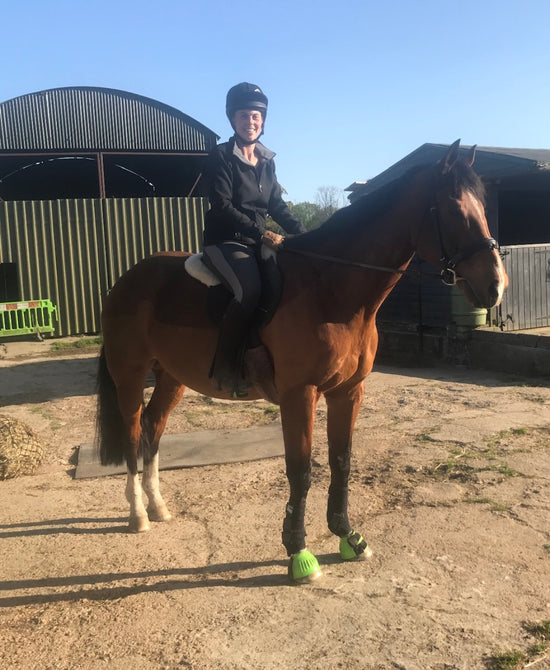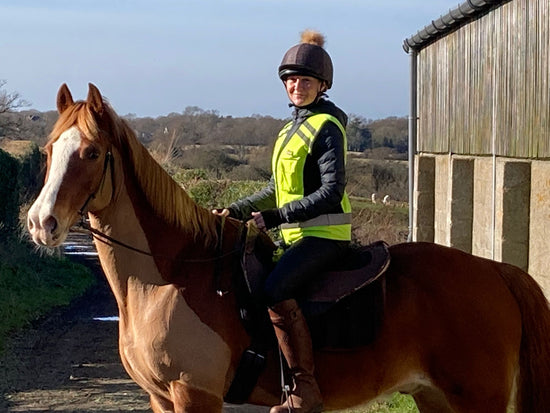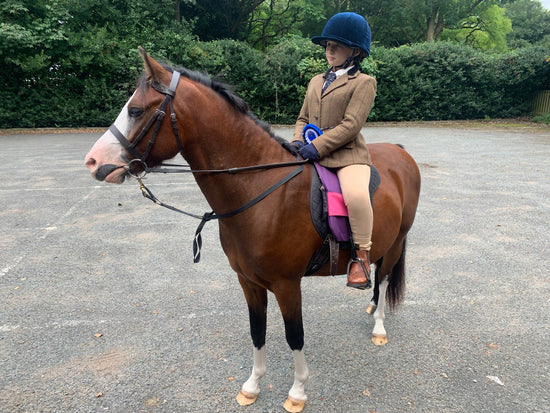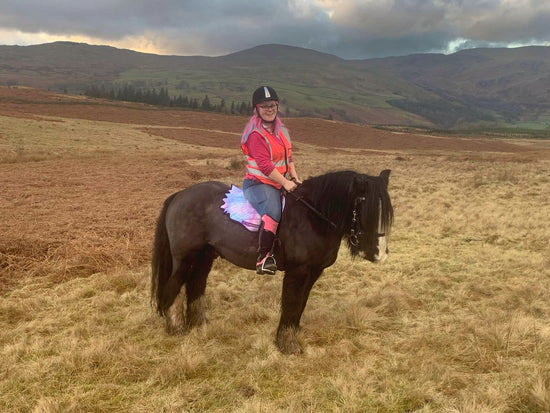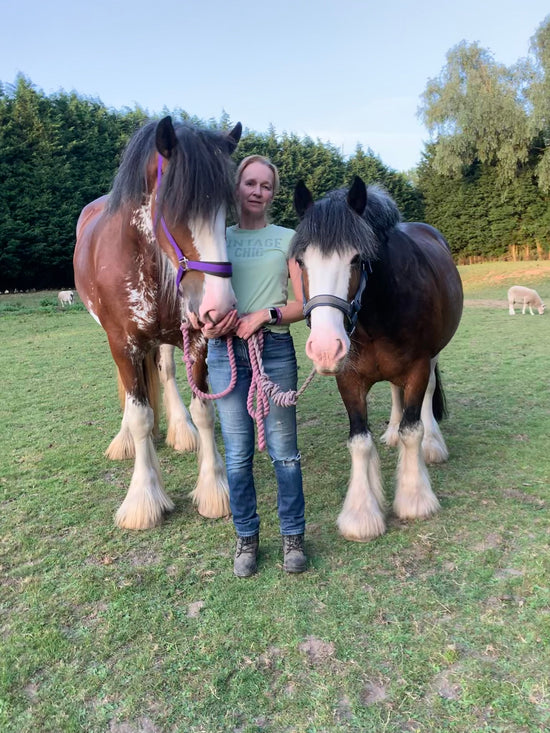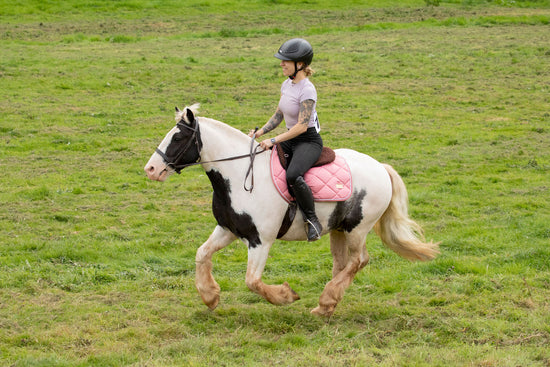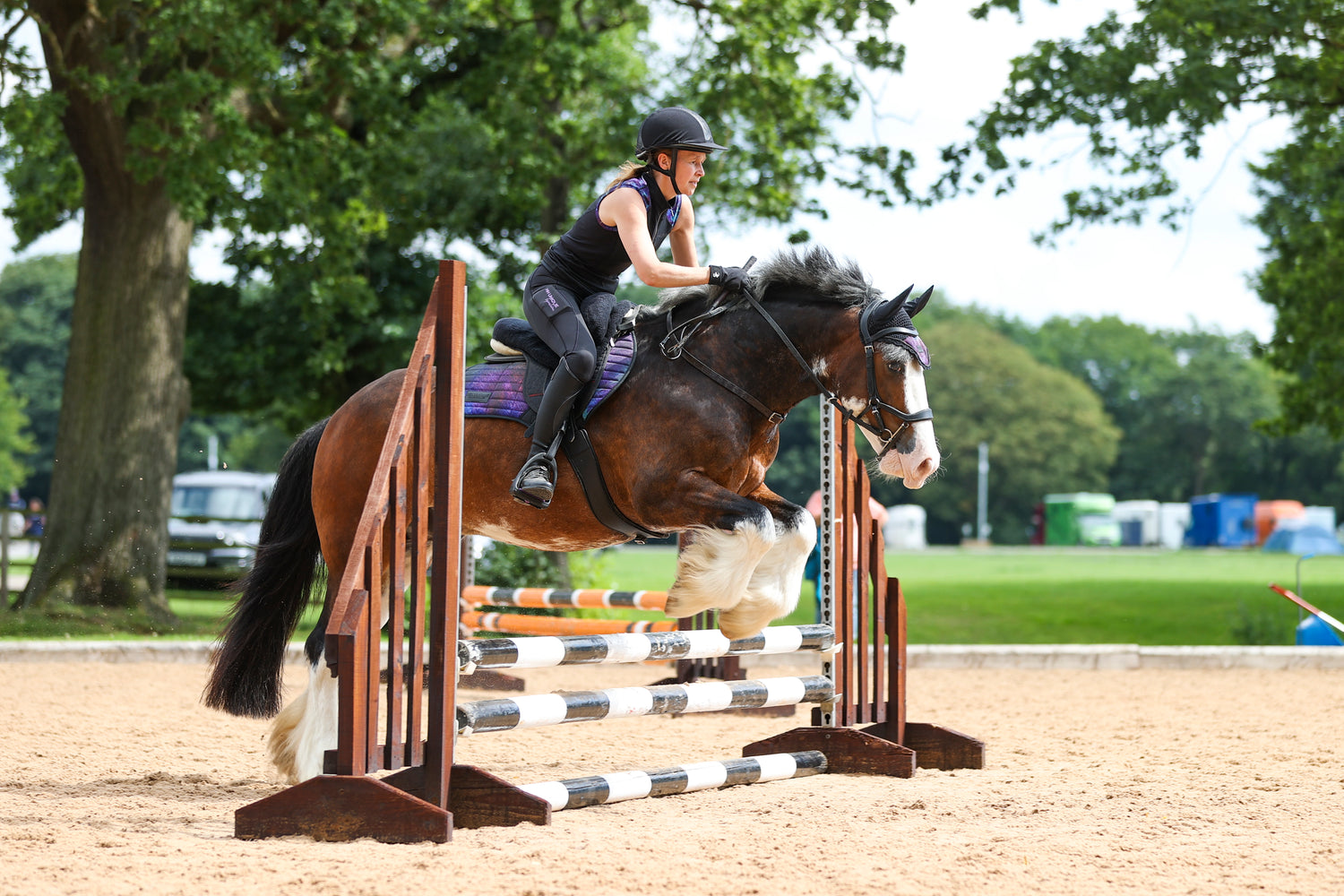Will the TCS fit my horse?
The Total Contact Saddle will fit any horse, from a Shire to a Shetland and everything in between, as well as riders of all levels of styles, shapes and sizes. It's especially well suited for horses who are young (and still growing) older (and changing shape), or those whose form fluctuates with the seasons; the larger flat backed table top horses, short backed horses, heavy horses, Shetlands, Arabs who can be hard to fit, Mules and Donkeys.
The TCS has a padded area under the underneath middle which helps disperse pressure which wraps around the horse and hugs their body, making it completely flexible to any size or shape of horse. In fact, many TCS customers have one saddle which they use on multiple horses - you can't do that with any other saddle!
One saddle really does fit all, as you’ll see from some of our client’s horses below who use the saddle. For detailed information on how to fit your saddle, ride in it and choose appropriate padding, you may like to read our user guide.
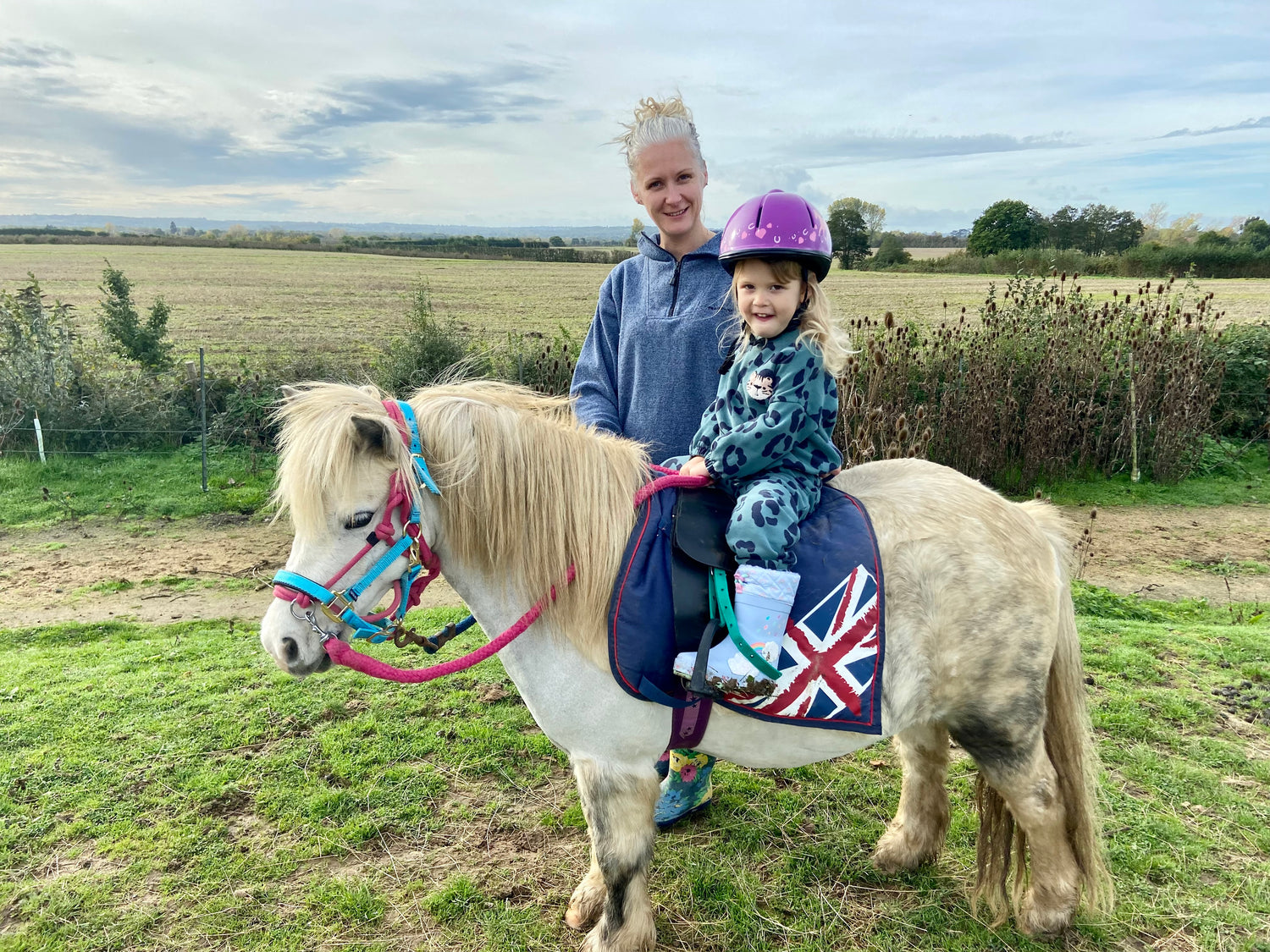
Meet Hamish
Hamish is a young Shetland pony who is learning to wear a saddle and his little jockey is learning to ride him. The Total Contact Saddle will fit him in all stages of his journey into being ridden. It will also fit his little jockey as she grows too!
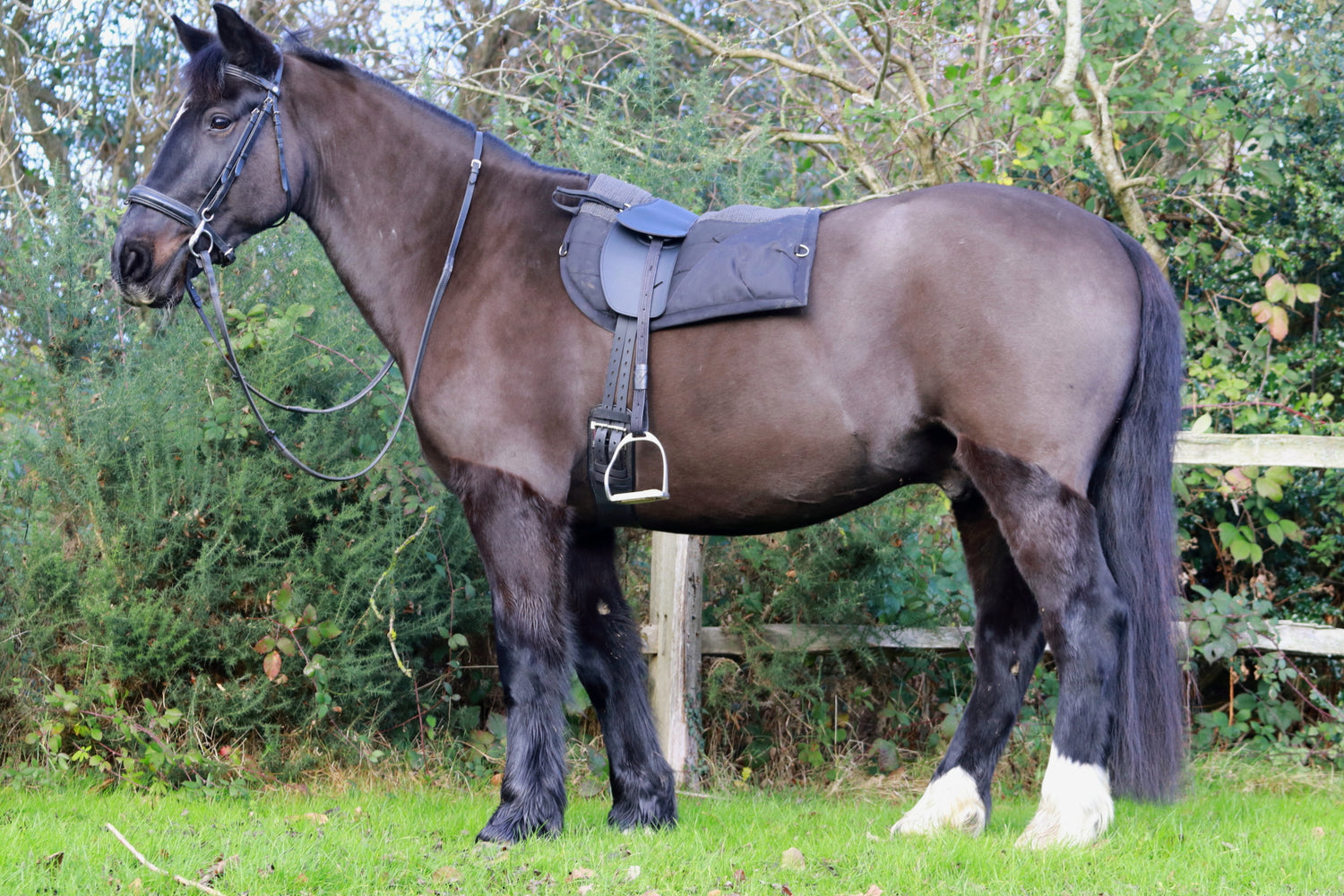
Meet Norfolk
Norfolk is a super chilled 18 year old Cob, he has a high wither and forward girth so not easy to saddle fit. The Total Contact Saddle is the perfect solution. Norfolk is wearing his synthetic long billet saddle and black TC saddle pad
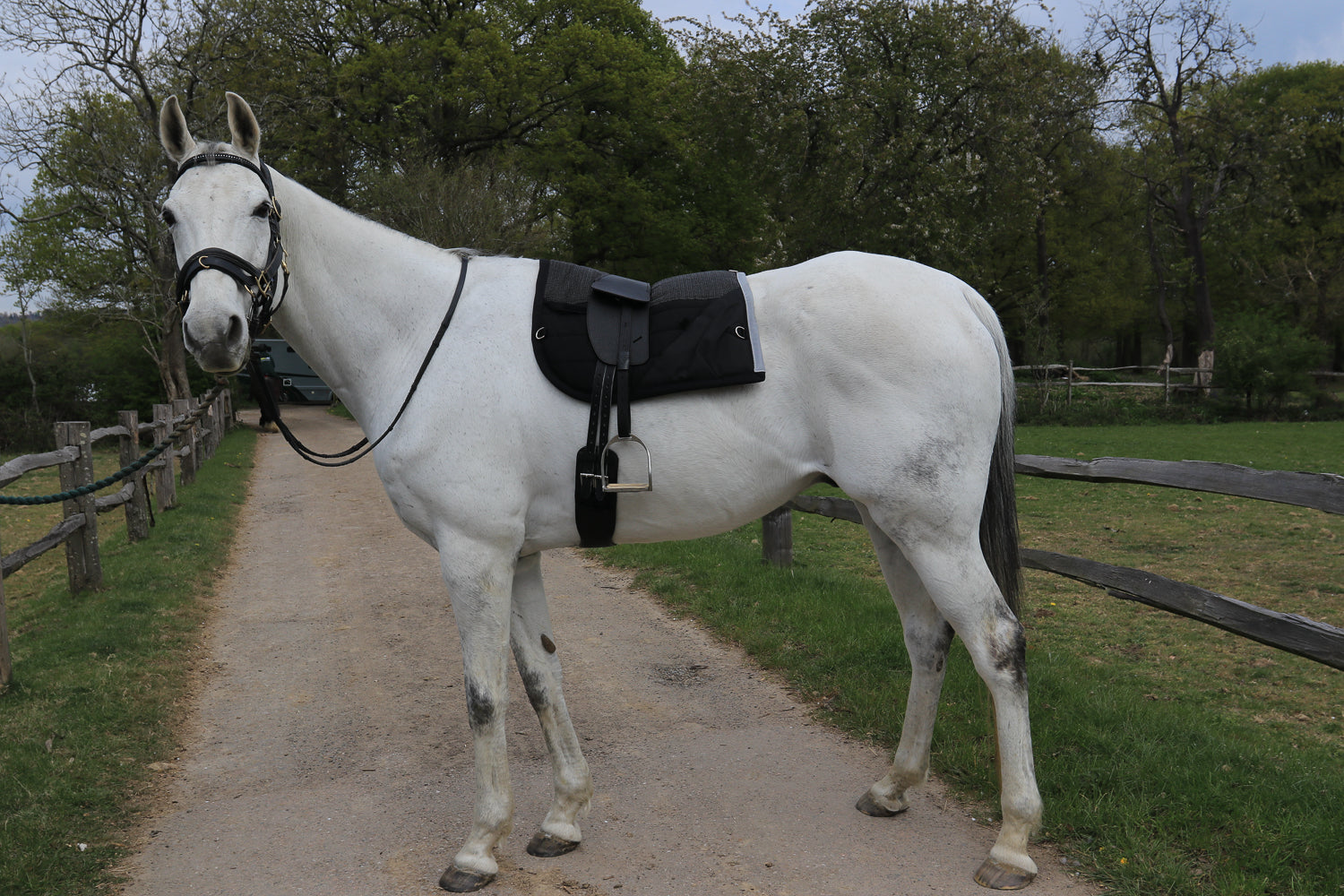
Meet Edward
Edward is a 17hh Ex Racer, now semi retired and enjoying a calmer slower life. Edward has been hard to find a suitable saddle but his TCS fits him beautifully and he is always guaranteed to be comfortable. Edward is wearing his Premium Black TCS and the black TC saddle pad
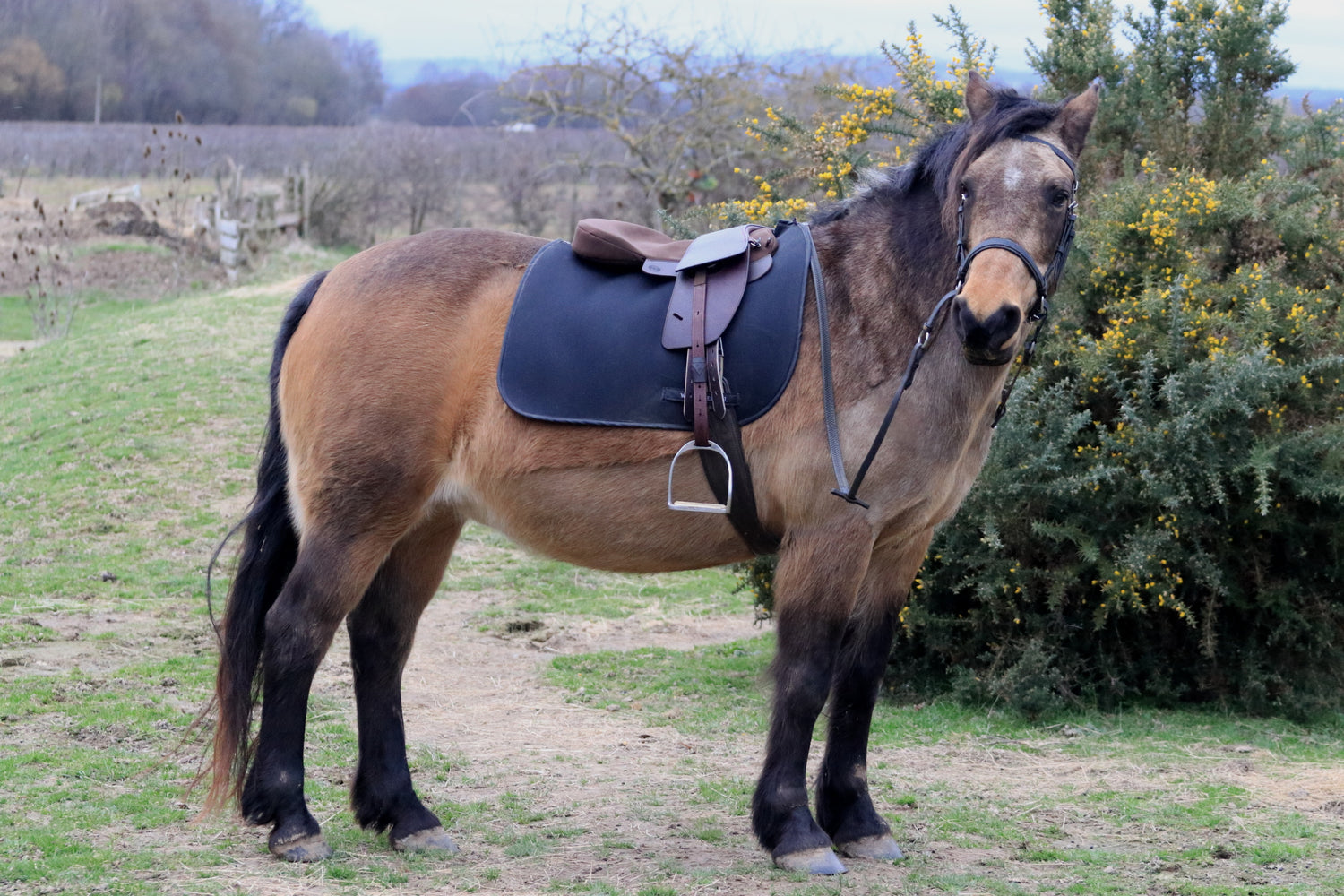
Meet Ciderbug known as Bug
Bug is a 14hh Connemara, Bug loves to jump, she has competed in show jumping and eventing but is now semi retired and enjoys country walks! She is a "well covered" girlie and the Total Contact Saddle fits both her and her human beautifully. She is wearing her Premium Nutmeg saddle, brown TC saddle seat pad and TC Supercool saddlecloth
Fitting & User Guide
Padding
To ensure the saddle remains stable and in place as you ride we strongly
suggest you use padding underneath the saddle which should be placed
just behind the wither of the horse.
What padding is suitable for your horse is the million dollar question! Don’t worry, it is as simple as the saddle, you don’t need to overthink it, maybe start by looking at what you already have in your tack room and trying that. A full sized pad is preferable and it should end below, or at, the bottom of the lower saddle flap. All horses are different but as a rule of thumb the rounder or more flat backed low withered builds will be very happy in just an average saddle pad like our Classic Total Contact pad we sell. It has just
the right thickness to be comfortable for horse and rider but you can still
“feel” the horse which is, after all, the whole point of the TCS! The more
high withered or dippy backed horses might need a little more padding for the comfort of them and their rider. Our TC Saddle Seat Pad or Saddle Seat will be suitable for high withered horses as well as all other shaped horses. Our Saddle seat pad will also give you more rider stability as it is more structured but without taking away the close contact. If you have a boney
behind then be mindful that your horse may feel your seat bones so take this into account when choosing your padding and again our Saddle seat will remedy this.
If you look on our Facebook Group Community page you will see many
different combinations people have used.
Saddle position
The Total Contact Saddle goes on top of your padding, with the front edge behind the wither. You will find it naturally finds its place on your horse.
Girths
It’s purely your preference if you order a short girth strap or a long girth strap saddle. The shorter billet saddle is intended for those that wish to use a longer /
standard length girth and the longer billet for those who wish to use a short / dressage girth. As the rider, if you feel you don’t have the flexibility to bend down and adjust a short under girth, you may be better suited to a short billet saddle - or if you want to use the TCS on a Shetland pony then the long billet may be too long and swamp him.
Stirrup Leathers
The stirrup bars are set much lower on the Total Contact Saddle than a regular tree'd saddle or saddle pads with stirrup attachments. You will find that your regular length of stirrup is likely to be 4-5 holes too low because of this. You can use regular leathers with buckles that you might have already but many TCS owners find dressage leathers or T bars / Webbers work well with the TCS. They are flatter and therefore less bulk under the thigh.
We find riders 5`' to 5"6" in height generally find the 22" -24" leathers are the best length for them (but this does depend on your inside leg) and how long you ride. The 24" leathers will give a drop of between 15" to 20". For an example - For example the 24" leathers would be perfect for an inside leg of 77cm / 30.5 inches
Functional length range
20" drop 13" to 17"
22" drop 14" to 18"
24" drop 15" to 20"
26" drop 17" to 23"
28" drop 19" to 25"
Pressure
Pressure on the horses’ back is the concern of many riders, regardless of the saddle they ride in. Simply put, the saddle spreads the pressure - so any forces created by the rider are distributed over a wide surface area with no one point pressing on the horse. Think of someone treading on your foot wearing flat shoes (TCS) or treading on your foot with stilettos (some treed saddles)
We have done a number of pressure tests over the years, and every time the saddle comes out very well with no pressure of note. The only pressure that shows up on the tests are the riders seat bones, which can be a consideration if you are a slimmer rider - though not all riders create pressure. This is easily solved with suitable padding, so just be mindful when you select the padding to accompany your TCS.
We also pay close attention to what our clients are saying. The TCS has now been around for over 15 plus years (as at 2022) and the feedback we get is that it helps horses and riders where other saddles can’t. We have reports from body workers & back practitioners including osteopaths, equine physios, McTImoney practitioners, Bowen and others.
How to ride in a TCS
You can mount from the ground (although for the sake of your horses’ back, we would not recommend this whatever saddle you use). It will be a bit harder to mount using a TCS from the ground as it doesn't have a pommel or cantle to hold onto, so you’ll need to be quite nimble!
Once you are on board, you will easily find your natural position. You don’t need to sit on the saddle, you can sit a little behind it but the most important thing is what feels comfortable for you. Let your legs drape down the girth line to find your
balance. This may feel odd at first if you have been used to a saddle and knee rolls, but you will soon get used to this feeling and will enjoy the freedom tomove.
There are a few things you can try as you get used to your saddle. Try standing in your stirrups at a halt and find your balance, and if your horse is sensible enough do the same in walk and maybe even trot; this will help you find your balance and natural seat. Another great exercise is to ride with no stirrups at a walk and really move your hips along with your horse's movement.
You will “feel” your horse so he may feel more spooky but that is because you can now feel his muscles respond more quickly than in a traditional saddle. It might feel like you are riding a new horse for a few rides, so take your time to get used to the feeling and find your balance.
Saddle Care
Your saddle will come to you already oiled, the Premium saddles are heavily oiled. Your saddle can be cleaned using a range of proprietary leather cleaning products like cream
cleaners, leather balm or similar and normally a quick wipe over is enough to keep it looking good. However, should your saddle get more than light dirt on it please don't use hot water or soapy water on it as this may affect the leather.
Ensure that your saddle is stored in a damp-free place and not put away in anything other than a dry condition.

